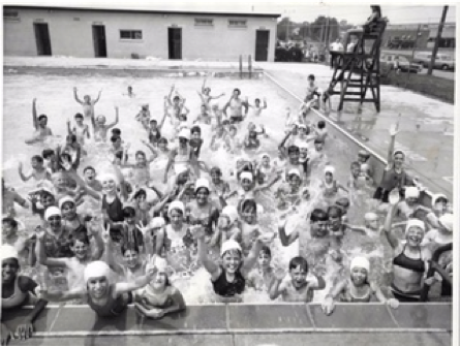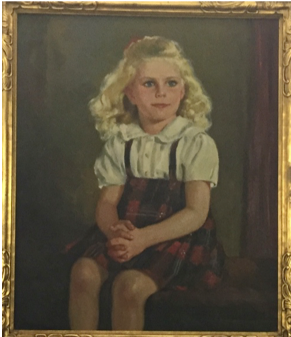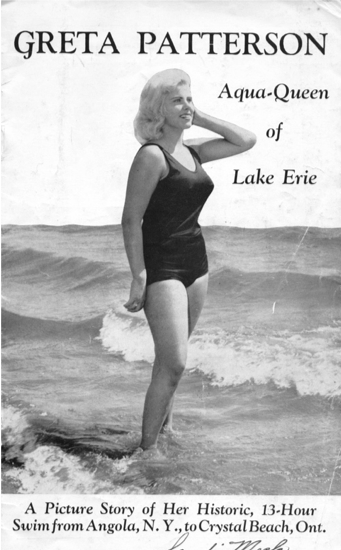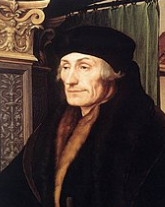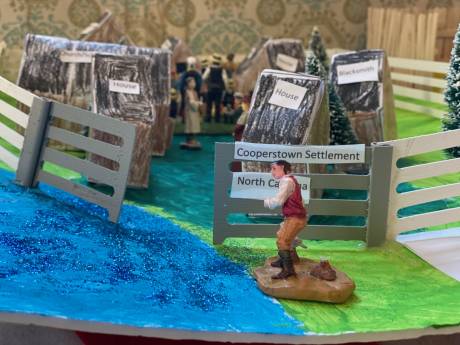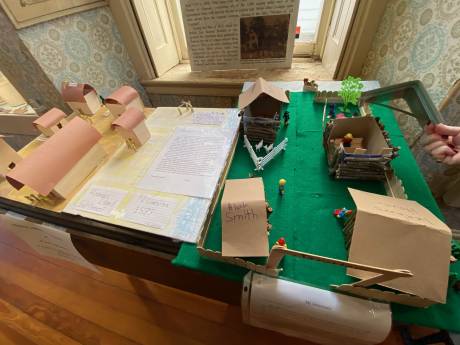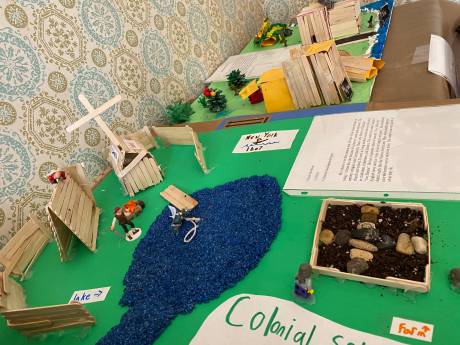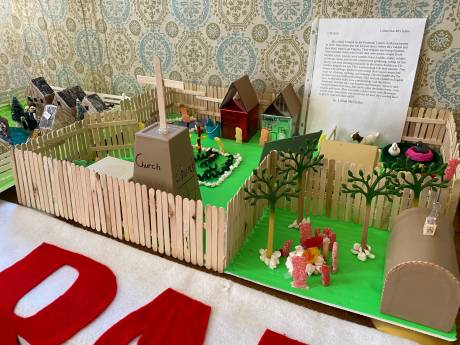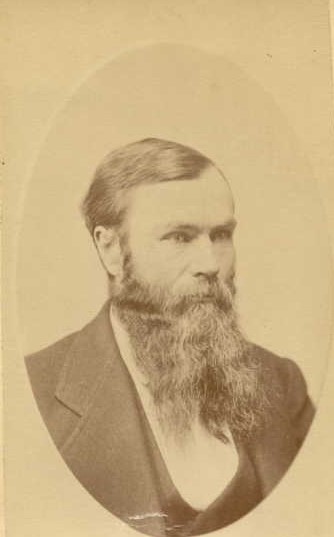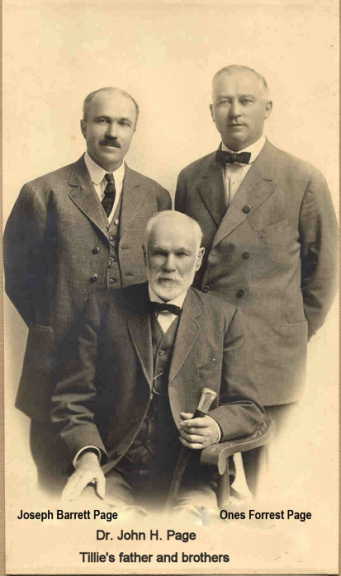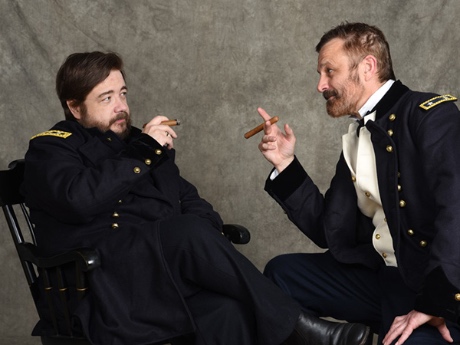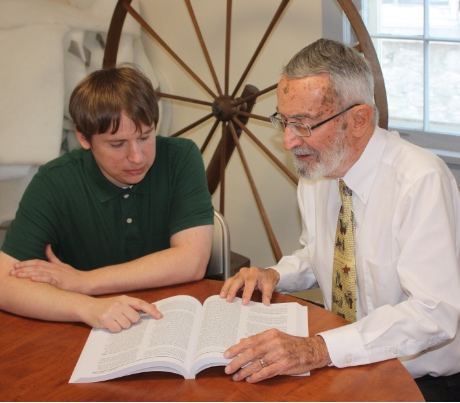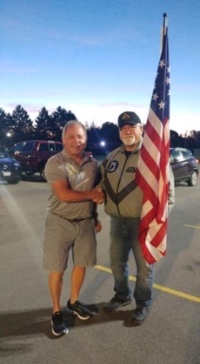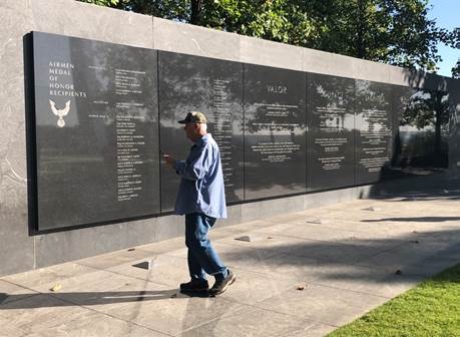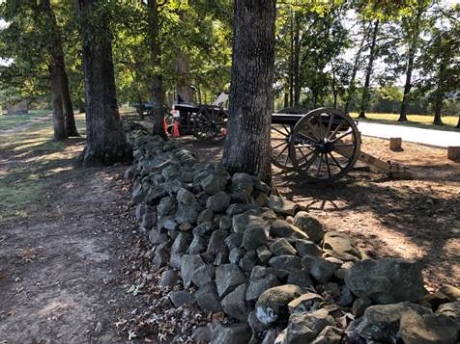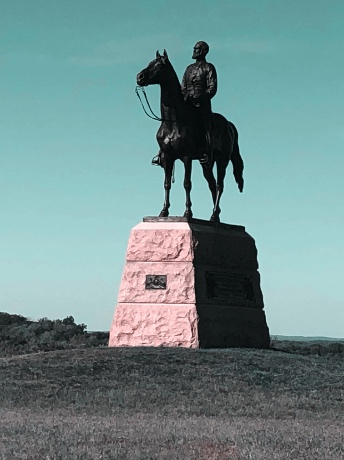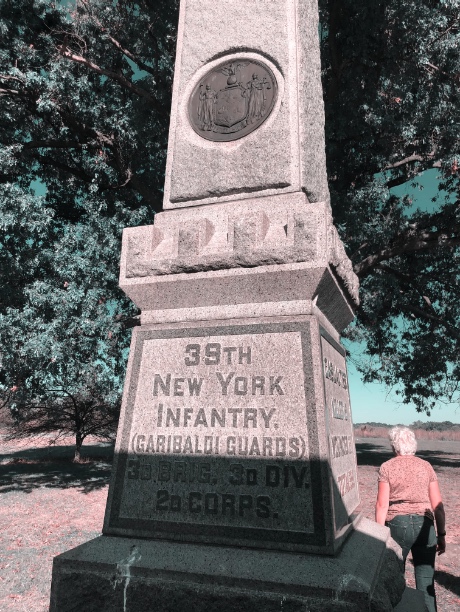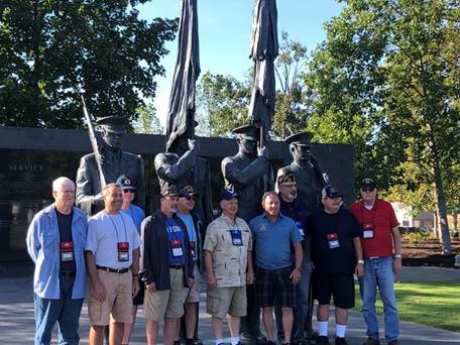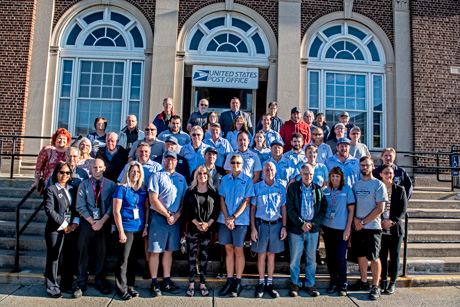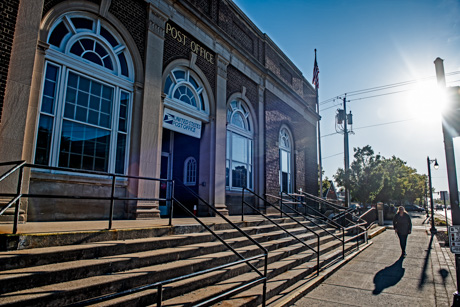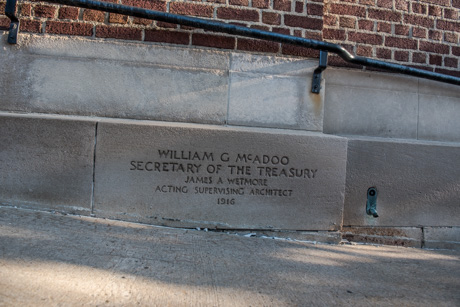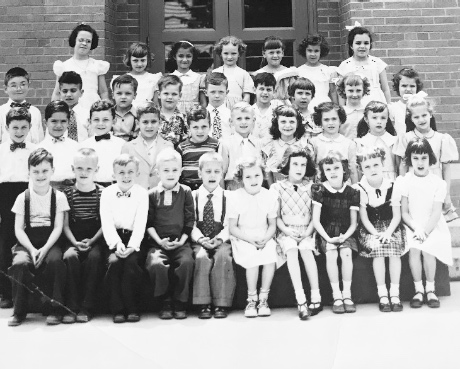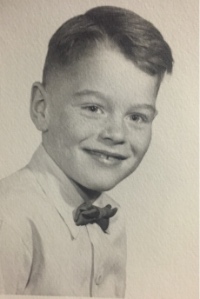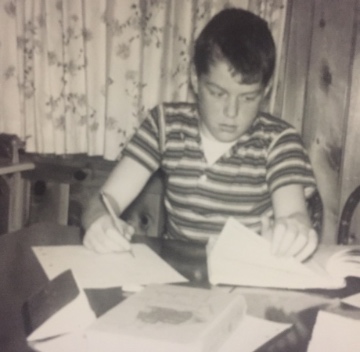St. Mary's School first grade 1952. Dave Reilly was sick that day and is not included in the photo. His infamous pal Charlie is fourth from the left in Row 2.
I'm sure there has been plenty of research done about memory. Why do some people have better memories than others? How do our memories change as we age? Why do some people have vivid memories of their childhood while others' recollections are scant at best?
Of my elementary school experience at St. Mary's School in Batavia, grades 1-8 from 1952 to 1960, I only seem to recall funny or unusual happenings. What we were taught, projects we did, and most day-to-day classroom experiences elude me.
It's the silly or odd stuff that somehow has remained in my brain all these years. I guess that might be some kind of clue about my personality, but that would be for the experts to figure out.
St. Mary's was still being constructed when I started there, so for first and second grade we were housed in the lower floor of Notre Dame High School next door, which itself had just been built.
I started first grade at the age of 5 and didn't turn 6 until January. My teacher was a nun, a Sister of the Holy Cross, and that was the case seven of my eight years at St. Mary's. I do not remember her name or that of my second-, fourth- or sixth-grade teachers either.
I missed the first week of first grade due to illness. Not only did I not get to know the teacher and kids, I apparently also was left out of a group class photo taken on the steps of the school. We didn't have on uniforms, but we subsequently had to wear them.
A Howdy Doody Lunchbox and Terrifying Teens
For some reason on my first day of first grade (Maybe my mom brought me for my grand entrance later in the morning?), the nun sent me to the lunchroom all by myself.
So, there I was -- probably in a striped shirt with a clip-on bow tie and dark blue corduroy pants carrying my Howdy Doody lunchbox -- surrounded by high school kids. I do recall being intimidated by those huge, adult-like creatures and staring at them with a wide-eyed kind of terror.
I still can't believe the sister sent me alone. Knowing how shy I was I bet my mom had to work some magic to get me back there the next day.
Second grade
(inset photo, left) is also a blur except for the time I got sick. I must have had a fever and recall shaking with the chills. Nonetheless, I was too afraid to tell the sister. When it came time to go to lunch, the nun lined us up and off we went down the hall.
I must have sneaked to the end of the line and as the class went one way, I went the other. Out the door I flew and on down the street.
It was probably about a mile from the school on Union Street to our house on Thomas Avenue, but despite being ill I made it. Imagine my mom's surprise (good thing she was home) when I walked in the door. “What in the world...?”, she probably said.
It's fortunate that she wasn't prone to any profanity until her elder years. After I was put to bed she must have called the school and reported my escape. I should have saved that skill for high school when I could have used it more beneficially.
The Lifelong Influence of Miss Marguerite Horgan
For Grade 3 we got to move into our now completed school. This was my only year with a secular teacher and it was my best and favorite one. Our teacher was the kind and gentle Miss Marguerite Horgan. Every day she would read to us and I enjoyed that. I like to think that she was a big influence on my lifelong love of reading.
When I became a fifth- and sixth-grade teacher myself for 33 years I made sure that every day after lunch I would try to choose some good example of children's literature and read an excerpt to my class.
The beginning of fourth grade is kind of foggy, but I think the nun who was supposed to be our teacher became incapacitated and as a result the fourth and fifth grades had to be combined.
Anyone who attended Catholic School in the '50s and '60s remembers that we always had classes numbering more than 40 students. I wish I had a class photo from that year because we must have been bursting at the seams with two classes joined together.
At lunchtime we were allowed to go outside to get some fresh air and play.
Fighting Dirty
That year some kind of construction was still going on and there was a big hill of dirt on the Union Street side of the school. This mound turned into a battleground of “king of the hill” between the fourth- and fifth-grade boys.
After about a week of torn and dirty clothes, bruises, cuts, several fistfights and most likely a bunch of parent phone calls, the principal put us on lockdown. Eventually the dirt hill was removed and we got to see the light of day again.
First and Lasting Impression
My only real memory of fifth grade happened on the first day before class even began. As we were milling about in the hall greeting our friends and looking for our classroom we heard some kind of commotion. Voices were rising, kids were laughing, and the queue of children and parents parted like the Red Sea.
But instead of Moses and the Israelites coming through, it was our classmate named Lenny. He had a wide grin on his face and a cigarette dangling from his lips.
Lenny didn't get too far before one of the nuns swooped in like a giant hawk and grabbed the cigarette in one hand and the collar of Lenny's shirt in the other. Away he went never to smoke up the halls of St. Mary's again. It was off to public school for him.
I was a student for 17 years and a teacher for 33 and absolutely no one ever made a more memorable entrance than Lenny.
Sixth grade must have been the year of boredom. One thing we had to do was memorize the Catholic catechism. The nun put a "Jeopardy!" like spin on this activity though by giving us the answer and we had to respond with the question.
A Pencil to Pass Time
To make the long day go by faster, I came up with a game to play. Did you realize that a pencil has six sides? Well, I made mine into a rolling die (as in the plural dice).
On a piece of paper I made a horseracing track divided into lanes of equal length. I would assign a famous horse (Citation, Whirlaway, Swaps) to a numbered lane and then roll the pencil to advance one to six spaces. I don't recall getting caught, but my mother had to have me tutored in math that year, so I guess one to six was my limit mathematically.
Grade seven
(inset photo, left, doing homework) went pretty well for most of the year. Sister Mary Lourdes was young and seemed to convey a more relaxed and understanding atmosphere than my previous nun teachers. I really liked her and I think I started to actually enjoy school.
But, at some time in the spring that feeling went bad in a hurry.
One day we were playing outside at lunch and my friends Anthony, John and I wanted to know how much time was left. Not having a watch, we went around on the Woodrow Road side of the school to look in the window of our classroom and see the clock.
When we got back to the room, Sister Lourdes had a very sour look on her face.
As we took our seats she explained that she was horrified someone committed a grave sin by stealing the money we had been collecting for the “Missions” (poor Catholics in Third World countries) out of the container on the shelf by the windows.
If that wasn't bad enough, she said that someone had told her that they saw Anthony, John and David out there by the windows during lunch.
“Did you take that money boys?” she queried. Of course, since we didn't, all three of us adamantly answered “NO!”
Charlie -- Esquire, and a Jury of Peers
Well, the sister must have smelled a great teaching moment in the air because she told the class that since she had evidence she was going to put us on trial and the class would be the jury.
I only remember two things about the trial.
One, my friend Charlie, the costar of several of my previous stories, finagled the job of being our defense attorney. As a precursor to his later getting a law degree from Syracuse University, Charlie won the case. I think the vote to acquit was unanimous. Two, this was mostly because sister's “evidence” was solely the testimony of the informer whom she would not identify.
Afterward the nun tried to apologize and say that she really believed we were innocent, but she wanted to teach the class a lesson. Maybe, but I wasn't having it.
For the rest of the term I was disillusioned and never trusted her again.
Eighth grade was not an enjoyable year for me, or probably my classmates either. Our teacher in retrospect was not well suited or happy in her job and took it out on us on a daily basis. In my stories I try to find humor in my nostalgic remembrances and there wasn't much of that in our final year at St. Mary's.
Inventive, Perhaps, Amusing, No
I do recall one instance when I tried to be funny, but classmate Susan, who sat in front of me, was not amused.
The sister was teaching a history lesson and asked, “Does anyone know who invented the steamboat?” I whispered to the girl, “Stanley Steamer.” Immediately she raised her hand and called it out.
Now, I will give Susan credit, because when the nun reprimanded her for such a ridiculous answer she didn't rat me out. Maybe Susan had mercy on me because I was seemingly already the teacher's whipping boy. I hope I apologized to my classmate for embarrassing her, and if I didn't, I should have.
In June 1960 my elementary school career came to a close and it was on to Notre Dame.
My poor recall of any significant learning in those eight years at St. Mary's is a mystery to me. My hope is that over my three-plus decades of teaching, I provided my students with more substantial memories that they can look back on with fondness.
(Photos courtesy of Dave Reilly.)

